Leaders often focus on numbers, things, strategies, and teams without seeing the full picture. But what if there was a simple framework to balance personal mental models and insights, team culture and dynamics, individual performance, and organisational systems? Enter the four-quadrant model from integral thinking:
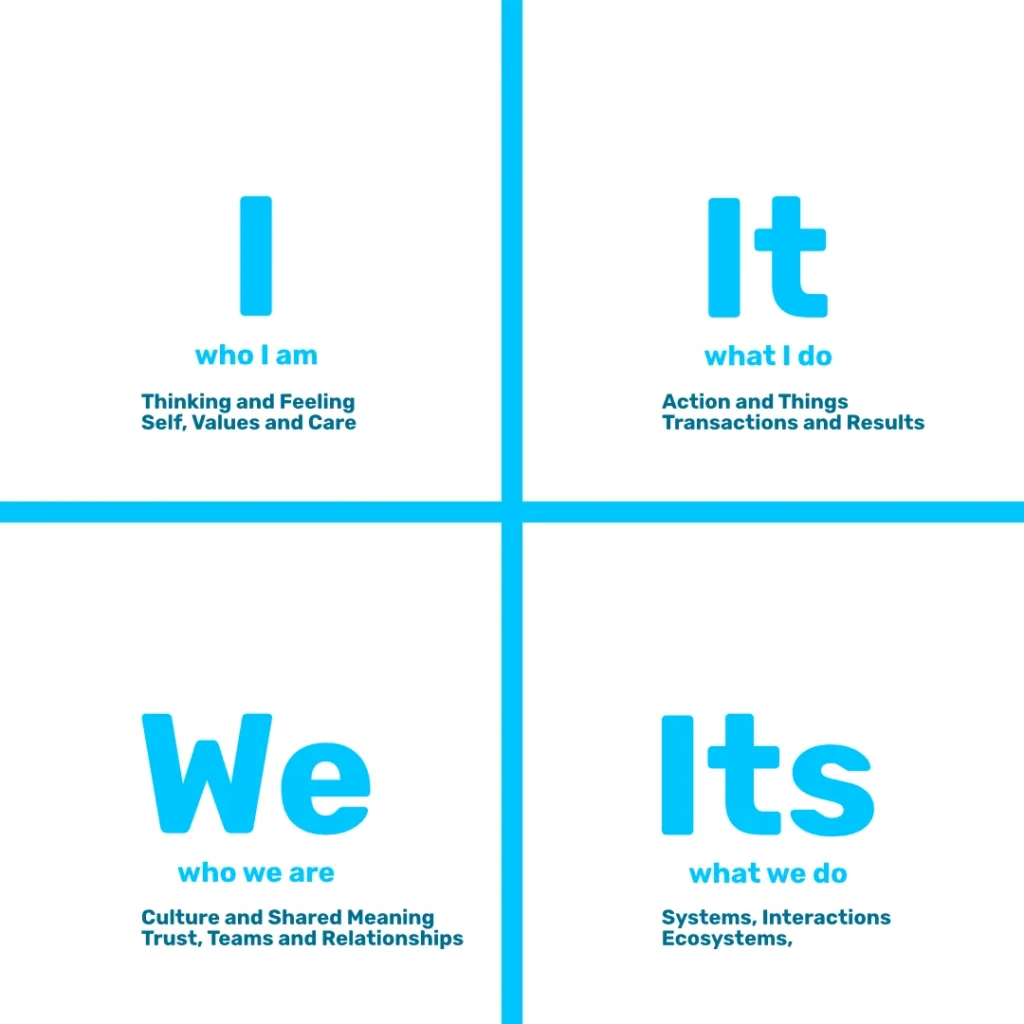
A practical tool that enables us to use four interconnected lenses:
the individual inner world (I), the shared group culture (We), the personal outer actions (It), and the collective structures (Its). This guide breaks it down in straightforward terms, with real-world tips to help you lead more effectively and drive better results.
1. The “I” Quadrant: Your Inner World
The “I” quadrant is all about the personal, inner side of things. Like what’s going on inside your head and heart. Who you are being. This includes thoughts, emotions, motivations, morals (care) and self-awareness. It’s the subjective stuff that shapes how you feel about your work, handle stress, or spark creativity. Think of it as the contextual worldview behind the decisions you make every day.
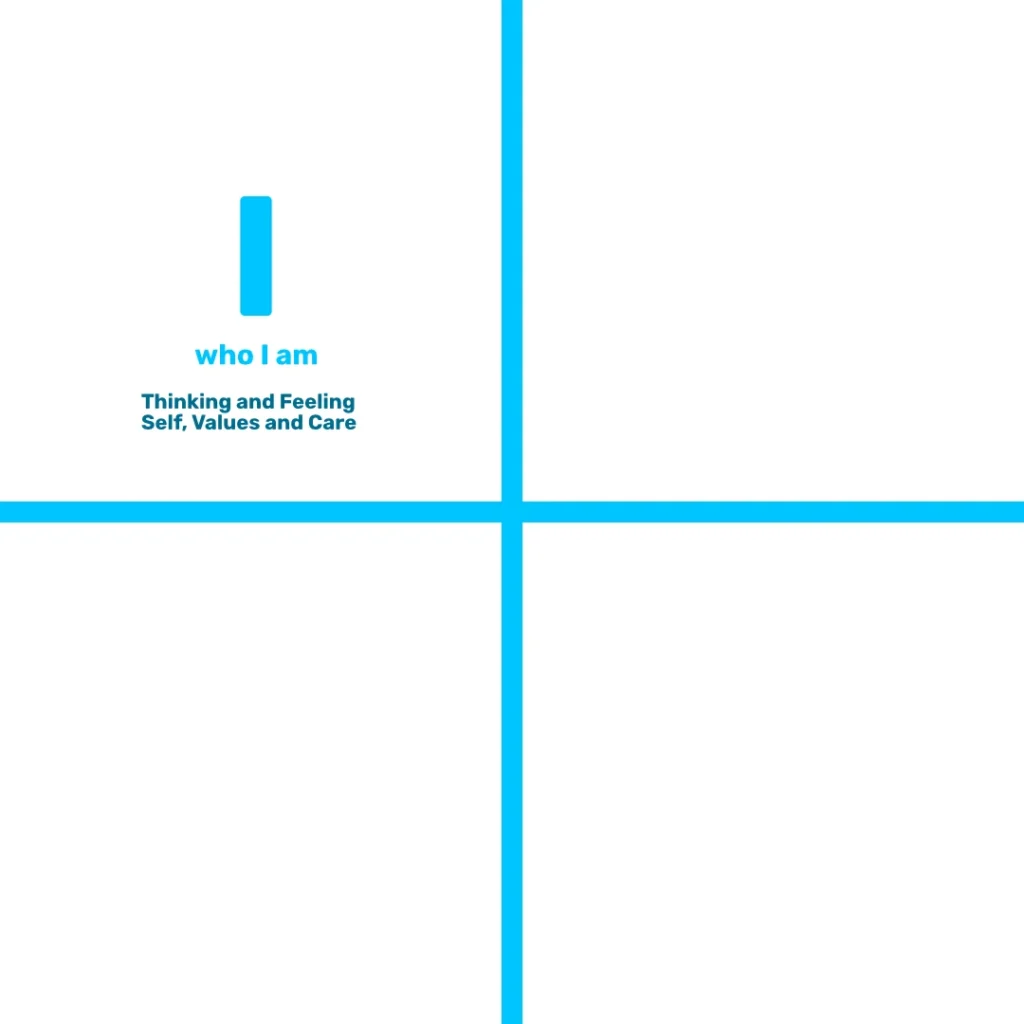
What It Means for You: In business, ignoring the “I” can lead to burnout or poor judgment. For example, a stressed executive might make rushed calls that react, instead of check in with all considerations, rushing over important factors. Employees with strong self-awareness and related boundaries, on the other hand, stay connected, resilient and innovative. This quadrant explains why personal development matters for professional success.
Healthy Expression: Leaders who practise reflection and self-awareness stay resilient, open, and creative. They make considered choices even in pressure. Their inner balance fuels outer performance.
Unhealthy Expression: Leaders who ignore this quadrant can react impulsively. Stress builds into burnout. Decisions become short-sighted. Innovation is stifled because there is no inner space for it to grow.
How to Integrate:
- Encourage self-reflection. Know thyself. Use tools like journaling or mindfulness apps to build emotional intelligence and an understanding of bias and paradigms.
- Support personal growth. Offer coaching or workshops on human development to link individual motivation with action and results.
- Lead by example. Share your own processes to create a culture where insight and consideration is valued.
“As leaders mature toward later stages, they become more capable of managing complexity and ambiguity, which is critical for strategic decision-making in dynamic business environments.”
Cook-Greuter, S. R. (2004). Making the Case for a Developmental Perspective. Industrial and Commercial Training
2. The “We” Quadrant: Our Shared Culture
The “We” quadrant focuses on the collective inner world. These are the relationships, collective values, and culture that bind your team together. It’s about how people connect, communicate, and build trust. Trust and communication are critical for high performance teams. This intersubjective space includes company morale, shared goals, and the unspoken norms that make or break collaboration.
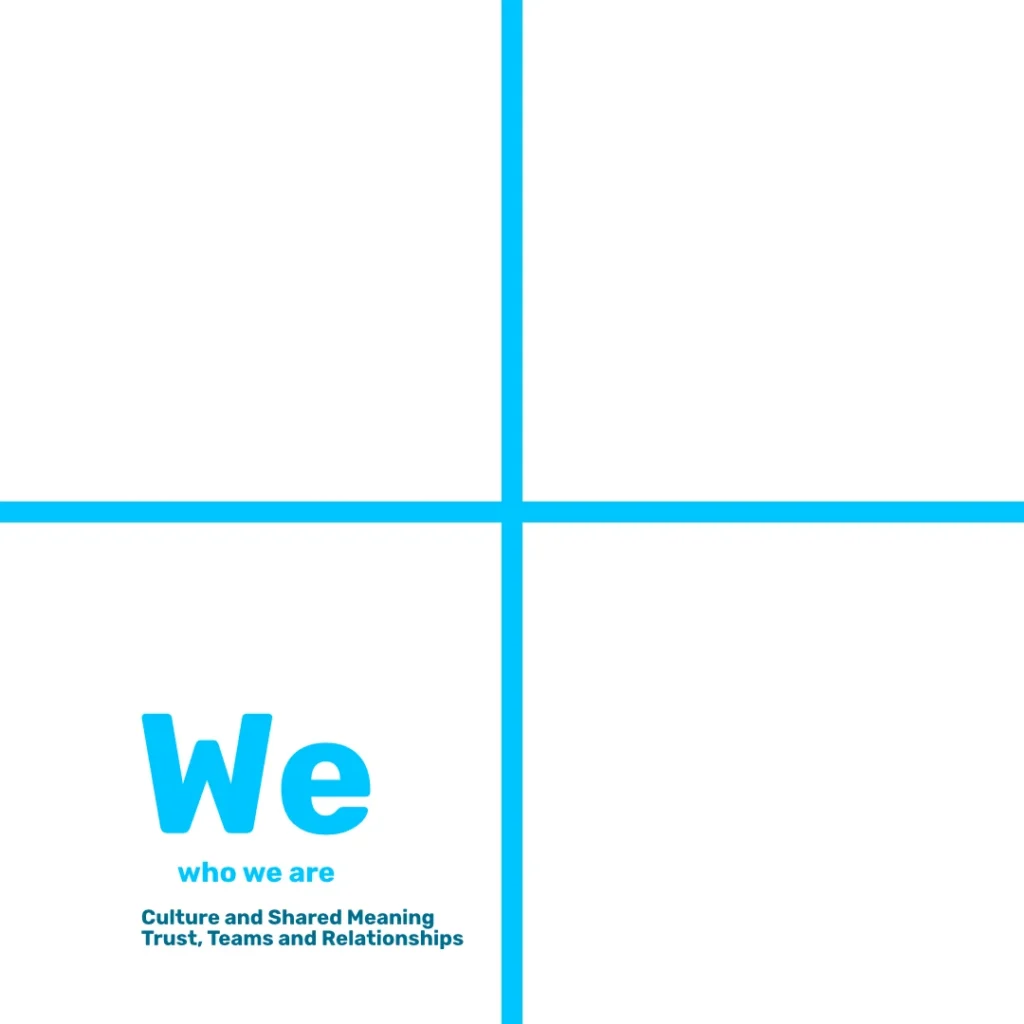
What It Means for You: A strong “We” fosters loyalty and teamwork, but a weak one leads to silos or conflicts. For instance, a remote team might struggle with isolation if cultural bonds aren’t nurtured. In sales, operations or creative roles, this quadrant drives the synergy that turns good ideas into great outcomes.
Healthy Expression: A strong “We” creates belonging and loyalty. Teams communicate clearly, solve problems together, and amplify each other’s strengths.
Unhealthy Expression: A weak “We” fractures into silos, mistrust, and conflict. Remote teams feel isolated. Collaboration breaks down and execution slows.
How to Integrate:
- Build meaningful connections. Acknowledge contributions towards collective performance in regular check-ins to strengthen relationships.
- Align on values. Out loud agreements. Clearly define your company’s mission and values that demonstrate belonging and purpose. Keep them.
- Promote open dialogue. Encourage feedback sessions to address issues before they escalate.
“By fostering collective awareness and shared meaning-making, leaders can cultivate a culture that supports innovation and resilience, essential for organisational transformation.”
O’Fallon, T. (2020). The Evolution of the Human Soul: Developmental Perspectives on Leadership and Culture. Integral Leadership Review.
3. The “It” Quadrant: Individual Actions and Results
The “It” quadrant deals with the observable, outer side of individuals. Especially what they do, how they perform, and what can be measured. This includes skills, behaviours, productivity, and physical health. It’s the objective data like KPIs, task completion, or even body language in meetings.
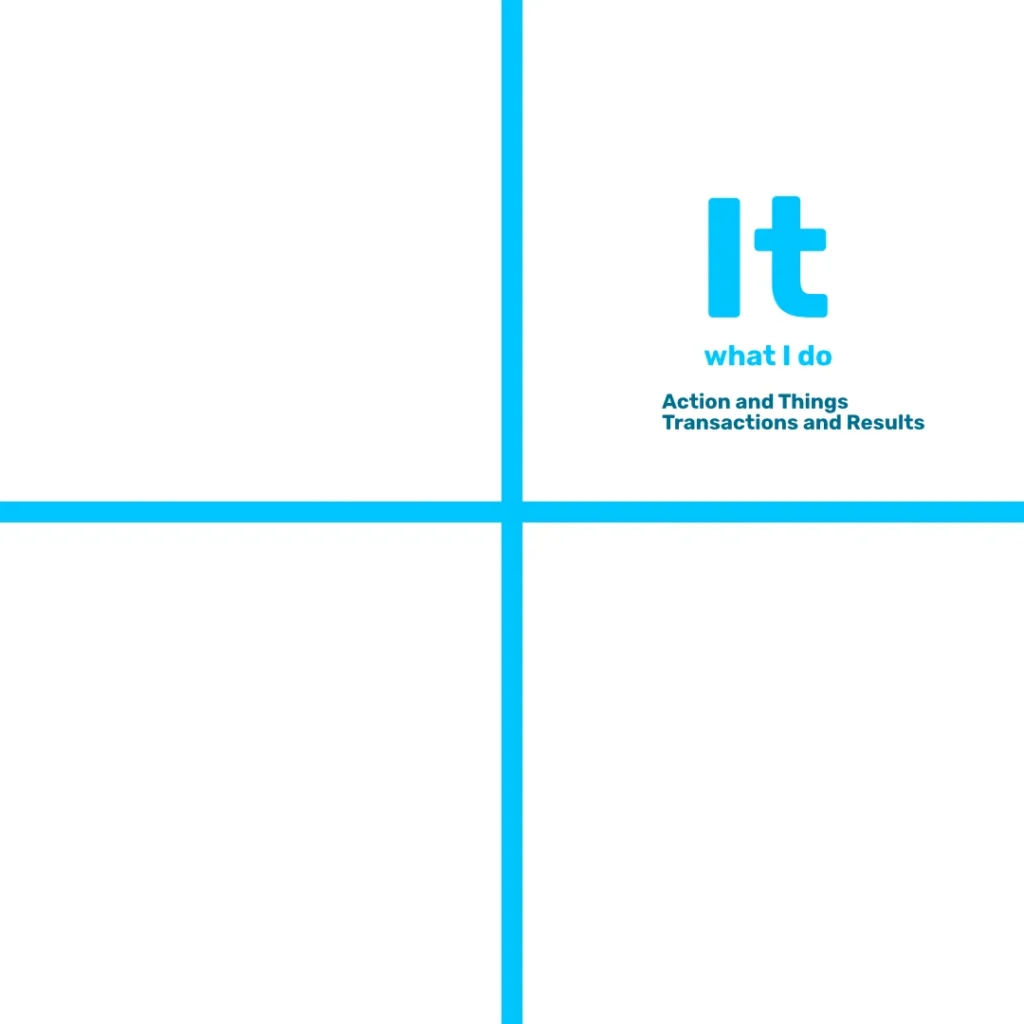
What It Means for You: Business thrives on results, so this quadrant is key for tracking performance. An employee might have great ideas (“I”), but if their execution (“It”) falls short, projects suffer. Think of a salesperson hitting quotas through disciplined follow-ups—this is “It” in action.
Healthy Expression: Strong execution habits. Individuals own their commitments, deliver results, and grow their skills. Promises are kept and progress builds momentum.
Unhealthy Expression: Great ideas without follow-through. Missed commitments, poor discipline, or unmonitored performance. Without the “It,” innovation never leaves the page.
How to Integrate:
- Measure what matters. Use the Promises Protocol. Use metrics and feedback to monitor, reflect and improve individual output.
- Provide training on how to manage accountabilities and performance.. Invest in skills development to enhance behaviours and results.
- Recognise achievements. Reward tangible contributions to motivate continued high performance.
“Conscious attention to skill development—such as active listening or strategic problem-solving—translates developmental insights into measurable leadership behaviors that drive organizational performance.”
Wilber, K. (2000). A Theory of Everything: An Integral Vision for Business, Politics, Science, and Spirituality.
4. The “Its” Quadrant: Systems and Structures
The “Its” quadrant covers the collective outer world. This is the larger systems, processes, and environments that support the market and your business. This includes organisational structures, technology, policies, and even the physical workspace. It’s the objective framework that enables everything else to function smoothly.
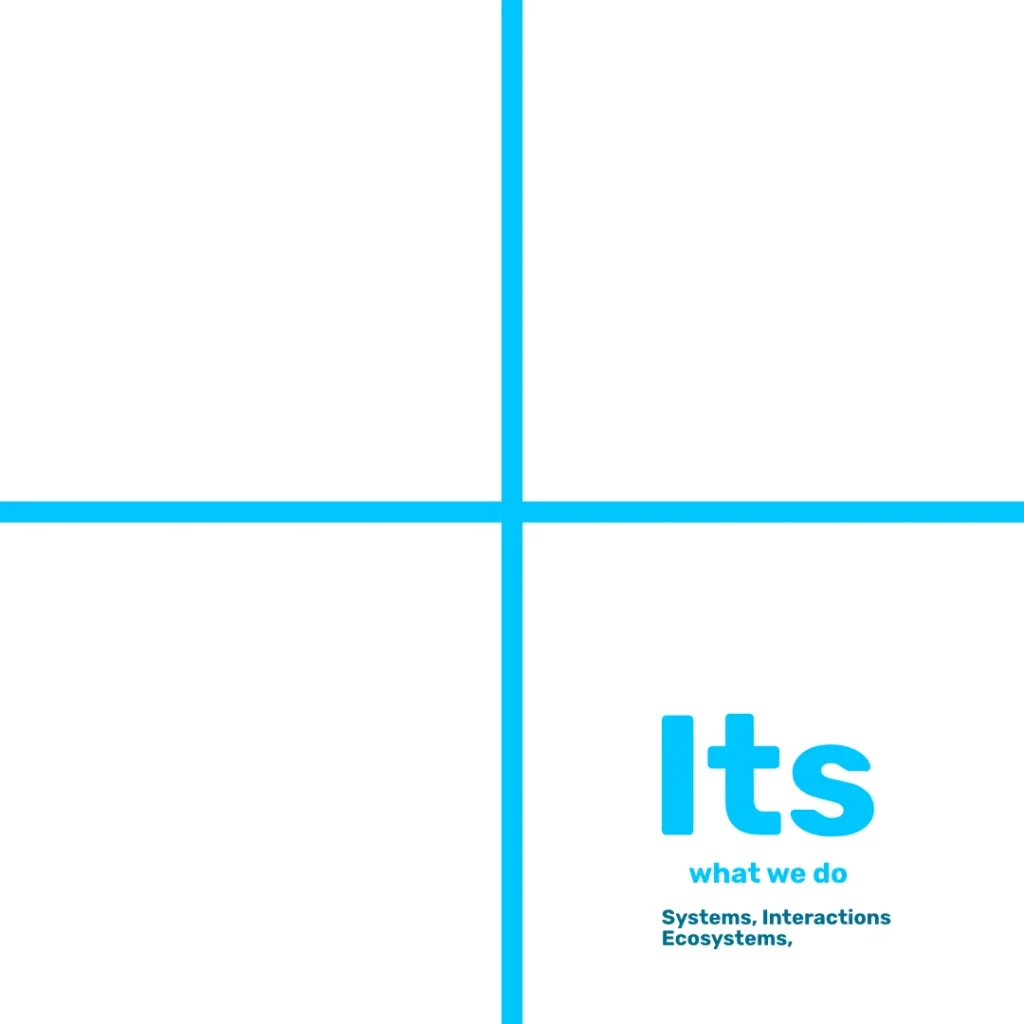
What It Means for You: Without solid “Its,” even the best teams falter. For example, outdated software can slow down operations, or poor supply chains can disrupt delivery. In growing companies, this quadrant ensures scalability and efficiency across the board.
Healthy Expression: Systems are reliable, adaptive, and scalable. Processes free people to focus on creativity and innovation. Structures support growth rather than block it.
Unhealthy Expression: Outdated technology. Broken supply chains. Policies that suffocate initiative. Without strong “Its,” even the best teams cannot succeed.
How to Integrate:
- Optimise processes. Regularly review and update systems to eliminate bottlenecks.
- Invest in infrastructure. Adopt tools like CRM software or ergonomic offices to support productivity.
- Plan for the long term. Build flexible structures that adapt to market changes and growth.
“Integral approaches to systems design, when aligned with conscious leadership, create organisational structures that adapt fluidly to change while maintaining strategic coherence.”
Wilber, K. (2006). Integral Spirituality: A Startling New Role for Religion in the Modern and Postmodern World.
The Integral Model

The quadrants are not four boxes on a page. They are four perspectives of the same reality, arising together in every moment. When you make a decision, your inner world (“I”), your team’s shared culture (“We”), your behaviour in action (“It”), and the systems you move within (“Its”) all shift at once. They co-arise, like four dimensions of the same event. Change in one inevitably alters and influences the others, whether you notice it or not.
The deeper truth is that these quadrants interpenetrate. Culture influences individual behaviour, which in turn reshapes systems, which then loop back into inner meaning and motivation. A leader who tends only to one quadrant will always be surprised by unintended consequences surfacing in the others. Mastery comes from seeing the weave, not the threads. This is where integral thinking shows its power: it reveals the hidden interplay, so each professional and leaders can steer and guide change with coherence rather than patchwork fixes.
Why This Matters
Why this matters is that business does not unfold in parts, it unfolds as a whole.
Each quadrant is nested within and interpenetrates the others. A leader’s inner state (“I”) lives inside a culture of relationships (“We”), which is expressed in behaviours and results (“It”), all within the wider systems and markets (“Its”). None can be separated.
Integral thinking trains leaders to see this nestedness, to recognise the way inner meaning, culture, performance, and structure constantly influence one another. In business, this means moving from piecemeal fixes to systemic design, interaction and change. Leaders who work with the whole weave create organisations that are not only more resilient but capable of transforming themselves as conditions change.
Three Steps to Apply This Today
- Assess Your Balance: Review your business. Where are you strong -in personal drive, team spirit, execution, or systems? Spot any weak quadrants.
- Integrate Actions: Tackle issues across quadrants. For low morale (“We”), combine training (“It”) with cultural shifts (“We”) and better tools (“Its”).
- Monitor Progress: Set goals for each quadrant and track them. Use surveys for “I” and “We,” metrics for “It” and “Its.”
“By attending to the interplay of individual consciousness, collective culture, personal behaviours, and organisational systems, leaders can create a dynamic synergy that fosters resilience and innovation across all dimensions of organisational life.”
O’Fallon, T. (2020). The Evolution of the Human Soul: Developmental Perspectives on Leadership and Culture. Integral Leadership Review.
Embracing the four-quadrant model isn’t about theory. Practice it for deeply practical gains. By seeing the full picture, you’ll lead with more insight, build resilient teams, and position your business for lasting success in a complex world.